Description
* ONLY MADE IN THE POWDER NOW NOT THE CAPSULE. THE POWDER HAS EVERYTHING THE CAPSULE HAS PLUS MORE TO THE FORMULA . YOU CAN ORDER THAT HERE
MAXIMUM IMMUNE SUPPORT WITH IMMUNE +
- Reduce Incidence of Colds*
- Antibacterial, Antiviral, and Antioxidant*
- Boost Immune Cell Count*
- 2,000IU Vitamin D3
- 30 Servings
Boost your immune system to reduce your chances of getting infected during the cold and flu season. Worried about #coronavirus ? Give yourself a fighting chance with Optitune Nutrition’s new item Immunity+
Did you know that elderberry prevents virus’ from being able to enter human cells thus preventing infection?
with #elderberry #astragalus #echinacea #zinc and many other Immune boosting ingredients. All in one perfect immunity boosting product!
Having a strong immune system is vital to good health and longevity. Supplementing for optimal immune function often leads people to a vitamin C supplement, but there are many other ways to improve immune health. In large part, immunity is improved by enhancing the health and number of white blood cells, combating pathogens, and reducing oxidation to reduce the incidence, and accelerate recovery from, illness.*
- Vitamin C increases antioxidant enzyme activity and reduces incidence of upper respiratory tract infections.*
- Astragalus activates the immune system by increasing CD4 and CD8 white blood cells (B cells and T cells).*
- Elderberry supplementation shortens the duration and severity of symptoms of cold and flu-like symptoms.*
- Olive extracts containing polyphenols have shown efficacy for killing viruses.*
- Echinacea increases macrophage function to enhance adaptive immunity.*
Get back in the game, with Immunity+.
*These statements have not been evaluated by the Food and Drug Administration. This product is not intended to diagnose, treat, cure, or prevent any disease.
Vitamin C
The immunity vitamin. Vitamin C helps improve antioxidant status, and it has shown efficacy for reducing the duration and intensity of cold symptoms.
- A vitamin C supplement can help reduce oxidative stress throughout the body.
- In athletes, vitamin c supplementation has been noted to reduce upper respiratory tract infection duration, frequency, and severity.
- Vitamin C supplementation can help mitigate the negative health effects of stress.
Vitamin D
Vitamin D is best known for improving bone health, and it has many other functions. Some of those functions include improving immune health.
- Vitamin D helps improve macrophage (cells which “eat” pathogens, protecting the body) function by reducing their adhesion to the cell wall.
- Increasing body vitamin D levels has been noted to reduce symptoms of autoimmune dysfunction.
- Increases regulatory T cell and memory B cell counts.
Zinc
Zinc is an essential mineral with many roles. It is one of the most important minerals for immune health.
- Zinc is used to form superoxide dismutase, an antioxidant enzyme.
- Zinc deficiencies are associated with immune dysfunction, among other complications.
- Supplementing zinc at the onset of a cold and during other viral infections has been observed to reduce duration and severity of symptoms.
Astragalus Root
Astragalus is an herb used in traditional Chinese medicine. It is purported to have life extension effects.
- Astragalus activates T cells to a greater extent than echinacea, which is independently capable of improving immune function.
- Astragalus supplementation encourages proliferation of immune cells, immunoglobulins, and macrophages.
- Collectively, this suggests enhanced adaptive immunity – a more specific and responsive type of immunity.
Elderberry
Elderberry is also known as Sambucus. There are several varieties of elderberry, but the most effective as a supplement is Sambucus nigra.
- Elderberry is rich in nutrients such as vitamin C, fiber, polyphenols, and anthocyanins.
- Supplementing with Elderberry relieves symptoms of influenza an average of 4 days faster than placebo.
- Extracts of Elderberry also help fight bacteria, such as H. pylori.
Olive Leaf Extract
Olives, and other parts of the plant contain several beneficial properties.
- Components of olive leaf extract possess antiviral effects
- Olive leaf may also be antibacterial against Staph infections
L-Lysine
Lysine is an essential amino acid. It has shown promise in combatting certain types of infections.
- Lysine promotes absorption of certain minerals, such as calcium
- As an arginine competitor, lysine may be effective at reducing the severity of herpes flare ups (Griffith, 1987).
Echinacea
Echinacea is often used at the first sign of sickness to help accelerate recovery and occasionally as a prophylaxis against colds.
- Echinacea may stimulate macrophage production, helping fight pathogens.
- A larger body of evidence suggest echinacea is effective for reducing the duration of sickness.
Grape Seed Extract
Grape seed has recently been discovered as a significant source of polyphenols and other antioxidants.
- It has shown great promise for improving overall health, particularly cardiovascular health.
- Using grape seed extract may be able to suppress inflammatory reactions to antigens, easing allergic symptoms.
Contact us with any questions!
References
Vitamin C
- Kuiper, H. C., Bruno, R. S., Traber, M. G., & Stevens, J. F. (2011). Vitamin C supplementation lowers urinary levels of 4-hydroperoxy-2-nonenal metabolites in humans. Free Radical Biology and Medicine, 50(7), 848-853.
- Mastaloudis, A., Morrow, J. D., Hopkins, D. W., Devaraj, S., & Traber, M. G. (2004). Antioxidant supplementation prevents exercise-induced lipid peroxidation, but not inflammation, in ultramarathon runners. Free Radical Biology and Medicine, 36(10), 1329-1341.
- Rafighi, Z., Shiva, A., Arab, S., & Yusuf, R. M. (2013). Association of dietary vitamin C and E intake and antioxidant enzymes in type 2 diabetes mellitus patients. Global journal of health science, 5(3), 183.
- Miller, J.Z., et al., Therapeutic effect of vitamin C: A co-twin control study. Jama, 1977. 237(3): p. 248-251.
- Ritzel, G., Letter: Ascorbic acid and the common cold. Vol. 235. 1976. 1108.
- Himmelstein, S.A., The effect of vitamin C supplementation on incidence of upper respiratory tract infections in marathon runners. 1997.
- Peters, E., et al., Vitamin C as effective as combinations of anti-oxidant nutrients in reducing symptoms of upper respiratory tract infection in ultramarathon runners. S Afr J Sports Med, 1996. 11(3): p. 23-7.
- Van Straten, M. and P. Josling, Preventing the common cold with a vitamin C supplement: a double-blind, placebo-controlled survey. Advances in therapy, 2002. 19(3): p. 151-159.
- Nakhostin-Roohi, B., Babaei, P., Rahmani-Nia, F., & Bohlooli, S. (2008). Effect of vitamin C supplementation on lipid peroxidation, muscle damage and inflammation after 30-min exercise at 75% VO^ sub 2max^. Journal of Sports Medicine and Physical Fitness, 48(2), 217.
Vitamin D
- Urashima, M., Segawa, T., Okazaki, M., Kurihara, M., Wada, Y., & Ida, H. (2010). Randomized trial of vitamin D supplementation to prevent seasonal influenza A in schoolchildren. The American journal of clinical nutrition, 91(5), 1255-1260.
- Abou-Raya, A., Abou-Raya, S., & Helmii, M. (2013). The effect of vitamin D supplementation on inflammatory and hemostatic markers and disease activity in patients with systemic lupus erythematosus: a randomized placebo-controlled trial. The Journal of rheumatology, 40(3), 265-272.
- Riek, A. E., Oh, J., Sprague, J. E., Timpson, A., de las Fuentes, L., Bernal-Mizrachi, L., … & Bernal-Mizrachi, C. (2012). Vitamin D suppression of endoplasmic reticulum stress promotes an antiatherogenic monocyte/macrophage phenotype in type 2 diabetic patients. Journal of Biological Chemistry, 287(46), 38482-38494.
- Kim, G., & Bae, J. H. (2016). Vitamin D and atopic dermatitis: A systematic review and meta-analysis. Nutrition, 32(9), 913-920.
- Martineau, A. R., Wilkinson, R. J., Wilkinson, K. A., Newton, S. M., Kampmann, B., Hall, B. M., … & Rainbow, S. J. (2007). A single dose of vitamin D enhances immunity to mycobacteria. American journal of respiratory and critical care medicine, 176(2), 208-213.
- Adams, J. S., & Hewison, M. (2008). Unexpected actions of vitamin D: new perspectives on the regulation of innate and adaptive immunity. Nature Reviews Endocrinology, 4(2), 80.
- Pludowski, P., Holick, M. F., Pilz, S., Wagner, C. L., Hollis, B. W., Grant, W. B., … & Soni, M. (2013). Vitamin D effects on musculoskeletal health, immunity, autoimmunity, cardiovascular disease, cancer, fertility, pregnancy, dementia and mortality—a review of recent evidence. Autoimmunity reviews, 12(10), 976-989.
- Terrier, B., Derian, N., Schoindre, Y., Chaara, W., Geri, G., Zahr, N., … & Piette, J. C. (2012). Restoration of regulatory and effector T cell balance and B cell homeostasis in systemic lupus erythematosus patients through vitamin D supplementation. Arthritis research & therapy, 14(5), R221.
Zinc
- Kelishadi, R., Hashemipour, M., Adeli, K., Tavakoli, N., Movahedian-Attar, A., Shapouri, J., … & Rouzbahani, A. (2010). Effect of zinc supplementation on markers of insulin resistance, oxidative stress, and inflammation among prepubescent children with metabolic syndrome. Metabolic syndrome and related disorders, 8(6), 505-510.
- Bao, B., Prasad, A. S., Beck, F. W., Fitzgerald, J. T., Snell, D., Bao, G. W., … & Cardozo, L. J. (2010). Zinc decreases C-reactive protein, lipid peroxidation, and inflammatory cytokines in elderly subjects: a potential implication of zinc as an atheroprotective agent. The American journal of clinical nutrition, 91(6), 1634-1641.
- Kara, E., Gunay, M., Cicioglu, İ., Ozal, M., Kilic, M., Mogulkoc, R., & Baltaci, A. K. (2010). Effect of zinc supplementation on antioxidant activity in young wrestlers. Biological trace element research, 134(1), 55-63.
- Sharquie, K. E., Khorsheed, A. A., & Al-Nuaimy, A. A. (2007). Topical zinc sulphate solution for treatment of viral warts. Saudi Medical Journal, 28(9), 1418.
- Al‐Gurairi, F. T., Al‐Waiz, M., & Sharquie, K. E. (2002). Oral zinc sulphate in the treatment of recalcitrant viral warts: randomized placebo‐controlled clinical trial. British Journal of Dermatology, 146(3), 423-431.
- MUN, J. H., KIM, S. H., JUNG, D. S., KO, H. C., KIM, B. S., KWON, K. S., & KIM, M. B. (2011). Oral zinc sulfate treatment for viral warts: An open‐label study. The Journal of dermatology, 38(6), 541-545.
- Prasad, A. S. (2008). Zinc in human health: effect of zinc on immune cells. Molecular medicine, 14(5), 353-357.
- Prasad, A. S., Beck, F. W., Bao, B., Fitzgerald, J. T., Snell, D. C., Steinberg, J. D., & Cardozo, L. J. (2007). Zinc supplementation decreases incidence of infections in the elderly: effect of zinc on generation of cytokines and oxidative stress. The American journal of clinical nutrition, 85(3), 837-844.
- Abreu, I. A., & Cabelli, D. E. (2010). Superoxide dismutases—a review of the metal-associated mechanistic variations. Biochimica et Biophysica Acta (BBA)-Proteins and Proteomics, 1804(2), 263-274.
- Singh, M., & Das, R. R. (2013). Zinc for the common cold. Cochrane Database of Systematic Reviews, (6).
- Baum, M. K., Lai, S., Sales, S., Page, J. B., & Campa, A. (2010). Randomized, controlled clinical trial of zinc supplementation to prevent immunological failure in HIV-infected adults. Clinical Infectious Diseases, 50(12), 1653-1660.
Astragalus Root
- Cho, W. C. S., & Leung, K. N. (2007). In vitro and in vivo immunomodulating and immunorestorative effects of Astragalus membranaceus. Journal of ethnopharmacology, 113(1), 132-141.
- Shao, B. M., Xu, W., Dai, H., Tu, P., Li, Z., & Gao, X. M. (2004). A study on the immune receptors for polysaccharides from the roots of Astragalus membranaceus, a Chinese medicinal herb. Biochemical and biophysical research communications, 320(4), 1103-1111.
- Du, X., Chen, X., Zhao, B., Lv, Y., Zhang, H., Liu, H., … & Zeng, X. (2011). Astragalus polysaccharides enhance the humoral and cellular immune responses of hepatitis B surface antigen vaccination through inhibiting the expression of transforming growth factor β and the frequency of regulatory T cells. FEMS Immunology & Medical Microbiology, 63(2), 228-235.
- Barak, V., Halperin, T., & Kalickman, I. (2001). The effect of Sambucol, a black elderberry-based, natural product, on the production of human cytokines: I. Inflammatory cytokines. Eur Cytokine Netw, 12(2), 290-296.
Elderberry
- Zakay-Rones, Z., Thom, E., Wollan, T., & Wadstein, J. (2004). Randomized study of the efficacy and safety of oral elderberry extract in the treatment of influenza A and B virus infections. Journal of International Medical Research, 32(2), 132-140.
- Tiralongo, E., Wee, S., & Lea, R. (2016). Elderberry supplementation reduces cold duration and symptoms in air-travellers: A randomized, double-blind placebo-controlled clinical trial. Nutrients, 8(4), 182.
- Barak, V., Halperin, T., & Kalickman, I. (2001). The effect of Sambucol, a black elderberry-based, natural product, on the production of human cytokines: I. Inflammatory cytokines. Eur Cytokine Netw, 12(2), 290-296.
- Zakay-Rones, Z., Varsano, N., Zlotnik, M., Manor, O., Regev, L., Schlesinger, M., & Mumcuoglu, M. (1995). Inhibition of several strains of influenza virus in vitro and reduction of symptoms by an elderberry extract (Sambucus nigra L.) during an outbreak of influenza B Panama. The Journal of Alternative and Complementary Medicine, 1(4), 361-369.
- Sidor, A., & Gramza-Michałowska, A. (2015). Advanced research on the antioxidant and health benefit of elderberry (Sambucus nigra) in food–a review. Journal of functional foods, 18, 941-958.
- Porter, R. S., & Bode, R. F. (2017). A review of the antiviral properties of black elder (Sambucus nigra L.) products. Phytotherapy Research, 31(4), 533-554.
Olive Leaf Extract
- Renis, H. E. (1969). In vitro antiviral activity of calcium elenolate. Antimicrobial agents and chemotherapy, 9, 167.
- Ali, N. H., Faizi, S., & Kazmi, S. U. (2011). Antibacterial activity in spices and local medicinal plants against clinical isolates of Karachi, Pakistan. Pharmaceutical biology, 49(8), 833-839.
- Sudjana, A. N., D’Orazio, C., Ryan, V., Rasool, N., Ng, J., Islam, N., … & Hammer, K. A. (2009). Antimicrobial activity of commercial Olea europaea (olive) leaf extract. International journal of antimicrobial agents, 33(5), 461-463.
L-Lysine
- Griffith, R. S., Walsh, D. E., Myrmel, K. H., Thompson, R. W., & Behforooz, A. (1987). Success of L-lysine therapy in frequently recurrent herpes simplex infection. Dermatology, 175(4), 183-190.
- McCune, M. A., Perry, H. O., Muller, S. A., & O’Fallon, W. M. (1984). Treatment of recurrent herpes simplex infections with L-lysine monohydrochloride. Cutis, 34(4), 366-373.
- Dawson-Hughes, B., Harris, S. S., Rasmussen, H. M., & Dallal, G. E. (2007). Comparative effects of oral aromatic and branched-chain amino acids on urine calcium excretion in humans. Osteoporosis international, 18(7), 955-961.
- Busque, S. M., Kerstetter, J. E., Geibel, J. P., & Insogna, K. (2005). L-type amino acids stimulate gastric acid secretion by activation of the calcium-sensing receptor in parietal cells. American Journal of Physiology-Gastrointestinal and Liver Physiology, 289(4), G664-G669.
Echinacea
- Zwickey, H., Brush, J., Iacullo, C. M., Connelly, E., Gregory, W. L., Soumyanath, A., & Buresh, R. (2007). The effect of Echinacea purpurea, Astragalus membranaceus and Glycyrrhiza glabra on CD25 expression in humans: a pilot study. Phytotherapy Research: An International Journal Devoted to Pharmacological and Toxicological Evaluation of Natural Product Derivatives, 21(11), 1109-1112.
- Schoop, R., Klein, P., Suter, A., & Johnston, S. L. (2006). Echinacea in the prevention of induced rhinovirus colds: a meta-analysis. Clinical Therapeutics, 28(2), 174-183.
- Grimm, W., & Müller, H. H. (1999). A randomized controlled trial of the effect of fluid extract of Echinacea purpurea on the incidence and severity of colds and respiratory infections. The American journal of medicine, 106(2), 138-143.
- Shah, S. A., Sander, S., White, C. M., Rinaldi, M., & Coleman, C. I. (2007). Evaluation of echinacea for the prevention and treatment of the common cold: a meta-analysis. The Lancet infectious diseases, 7(7), 473-480.
- Tiralongo, E., Lea, R. A., Wee, S. S., Hanna, M. M., & Griffiths, L. R. (2012). Randomised, double blind, placebo-controlled trial of Echinacea supplementation in air travellers. Evidence-Based Complementary and Alternative Medicine, 2012.
- Jawad, M., Schoop, R., Suter, A., Klein, P., & Eccles, R. (2012). Safety and efficacy profile of Echinacea purpurea to prevent common cold episodes: a randomized, double-blind, placebo-controlled trial. Evidence-Based Complementary and Alternative Medicine, 2012.
- Rehman, J., Dillow, J. M., Carter, S. M., Chou, J., Le, B., & Maisel, A. S. (1999). Increased production of antigen-specific immunoglobulins G and M following in vivo treatment with the medicinal plants Echinacea angustifolia and Hydrastis canadensis. Immunology letters, 68(2-3), 391-395.
Grape Seed Extract
- Tang, Q., Zou, P., Jin, H., Fu, J., Yang, J., Shang, L., & Wei, X. (2012). Grape-seed proanthocyanidins ameliorate contact hypersensitivity induced by 2, 4-dinitrofluorobenzene (DNFB) and inhibit T cell proliferation in vitro. Toxicology letters, 210(1), 1-8.
- Romier-Crouzet, B., Van De Walle, J., During, A., Joly, A., Rousseau, C., Henry, O., … & Schneider, Y. J. (2009). Inhibition of inflammatory mediators by polyphenolic plant extracts in human intestinal Caco-2 cells. Food and Chemical Toxicology, 47(6), 1221-1230.
- Velmurugan, B., Singh, R. P., Kaul, N., Agarwal, R., & Agarwal, C. (2010). Dietary feeding of grape seed extract prevents intestinal tumorigenesis in APCmin/+ mice. Neoplasia (New York, NY), 12(1), 95.
- Li, X. L., Cai, Y. Q., Qin, H., & Wu, Y. J. (2008). Therapeutic effect and mechanism of proanthocyanidins from grape seeds in rats with TNBS-induced ulcerative colitis. Canadian journal of physiology and pharmacology, 86(12), 841-849.
- Terra, X., Valls, J., Vitrac, X., Mérrillon, J. M., Arola, L., Ardèvol, A., … & Blay, M. (2007). Grape-seed procyanidins act as antiinflammatory agents in endotoxin-stimulated RAW 264.7 macrophages by inhibiting NFkB signaling pathway. Journal of agricultural and food chemistry, 55(11), 4357-4365.
California’s Proposition 65 entitles California consumers to special warnings. WARNING: Cancer and Reproductive Harm – www.P65warnings.ca.gov/




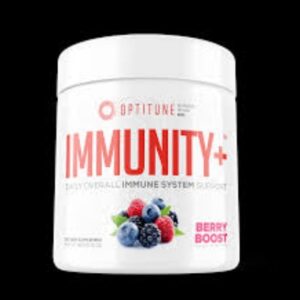
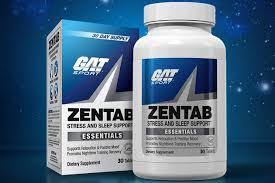
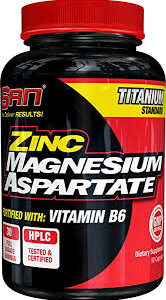
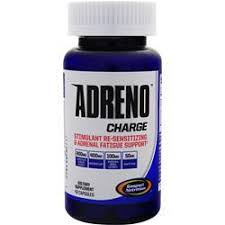
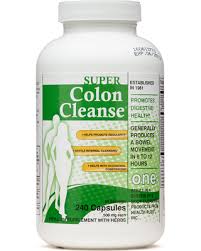
Reviews
There are no reviews yet.